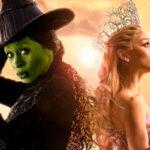

Since its release in 1984, “A Nightmare on Elm Street” has become a landmark work in the horror genre, marking not only the beginning of a lasting franchise but also leaving an indelible mark on popular culture. Directed by Wes Craven, this film not only terrified audiences with its disturbing imagery but also spawned a host of fascinating curiosities that contribute to its rich history and legacy. By delving into the production’s behind-the-scenes, the filmmakers’ creative choices, and the lasting cultural impact of the film, one can immerse themselves in a universe filled with secrets and fascination that continues to intrigue cinema fans to this day.
1 DEBUT
“A Nightmare on Elm Street” marked Johnny Depp’s debut in cinema.
2 FREDDY KRUEGER WOULD HAVE BEEN VERY DIFFERENT
Wes Craven initially conceived Freddy Krueger with the intention of portraying him as a typical silent serial killer, similar to Jason Voorhess and Michael Myers. However, throughout the subsequent films in the franchise, the character gradually acquired nuances of dark humor.
3 LOTS OF FAKE BLOOD
Approximately 500 gallons of fake blood were used during the film’s production. It’s important to note that in the cinematic work, the blood associated with Freddy Krueger is depicted in the color green.
4 THE FILM WAS ALMOST CANCELED
“A Nightmare on Elm Street” came dangerously close to being canceled. Midway through production, the New Line Cinema, responsible for the film’s production, had its distribution contract rescinded. This left the studio without funds, resulting in a two-week delay in payments to the cast and crew. Despite this setback, filming continued as usual during this period, with no crew members abandoning the project. Eventually, the film’s success in theaters prevented New Line Cinema from facing imminent bankruptcy.
5 BASED ON TRUE EVENTS
The inspiration for Freddy Krueger came to Wes Craven when he stumbled upon a series of articles in a newspaper, reporting murders in which the victims mentioned having nightmares before their death. Interestingly, all the victims died while they were asleep, sparking the filmmaker’s imagination to create the iconic character.
6 ROBERT ENGLUND DREW INSPIRATION FROM ANOTHER CHARACTER
To bring Freddy Krueger to life, Robert Englund found inspiration in another legendary figure of horror and musical theater: Klaus Kinski, renowned for his role as Nosferatu in the 1979 remake of the classic film of the same name, as well as in the acting style of James Cagney.
7 HEAVY MAKEUP
During filming, the actor dedicated approximately four hours each day to the makeup session, while a team of makeup artists worked on his transformation. The process involved applying 11 separate pieces of makeup on Englund’s face and neck, requiring detailed finishing to ensure he looked as realistic and terrifying as possible.
8 FREDDY’S SHIRT COLORS WERE INTENTIONAL
The iconic shades of the shirt that immortalized Freddy Krueger are scientifically engineered to evoke fear. According to Scientific American magazine, the human eye struggles to distinguish these specific shades of green and red when they are in close proximity, creating a disturbing effect. Inspired by this discovery, Wes Craven conceived the design of the classic shirt after reading the article.
9 THE MOVIE THAT BECAME A BOOK
The movie became a book. The first American edition of “A Nightmare on Elm Street” was funded through crowdfunding, with a campaign on the Kickstarter platform. Actress Heather Langenkamp, known for portraying Nancy Thompson, the protagonist of the first three films in the series, actively participated in this initiative.
10 PANCAKE MIX
The scene where the staircase steps sink like quicksand was created using pancake mix.
11 THE FILM WAS REJECTED BY SEVERAL STUDIOS
Several studios rejected the script for various reasons. The first studio to show interest in the project was Disney, but they requested Wes Craven to soften the story to make the film more suitable for children and teenagers. Craven declined the proposal.
12 FREDDY KRUEGER WOULD BE EVEN MORE FRIGHTENING
The original conception of Freddy Krueger was quite grotesque, with teeth protruding from the jaw, pus secretion coming out of the head when he expressed pain, and part of the skull visible through the scalp. David B. Miller, in charge of the makeup effects, explained that it would be extremely challenging and unconvincing to apply this makeup to an actor. Additionally, using a puppet for the scenes would be difficult to blend with real actors. Therefore, these initial ideas were adapted and modified.
13 DIRECTORIAL SWITCH
Wes Craven collaborated with director Sean S. Cunningham on some scenes in “Friday the 13th” in 1980. In return, near the end of “A Nightmare on Elm Street,” Craven allowed Cunningham to direct a dialogue-free scene.
14 THE FILM WOULD HAVE BEEN MUCH DARKER
Initially, Wes Craven conceived Freddy Krueger as a child abuser. However, during the production of the film, there were a series of highly publicized cases of child sexual abuse in California that caused public outrage. Fearing that this could generate controversy and harm the film’s reception, Craven chose to transform the character into a child killer.
15 BUDGET AND BOX OFFICE
“A Nightmare on Elm Street” was produced with a budget of $1.8 million and managed to gross over $57 million.
In conclusion, the behind-the-scenes trivia of the 1984 film “A Nightmare on Elm Street” offers a fascinating glimpse into the making of this iconic horror masterpiece. From the real-life inspiration for the character Freddy Krueger to the challenges faced during production, such as funding issues and crucial creative decisions, each detail contributes to the rich tapestry of the film’s legacy. Furthermore, the commercial and cultural success achieved, driven by its impressive box office earnings and lasting impact on popular culture, solidify “A Nightmare on Elm Street” as an undisputed milestone in the horror genre and as a continual source of fascination for cinema fans.








